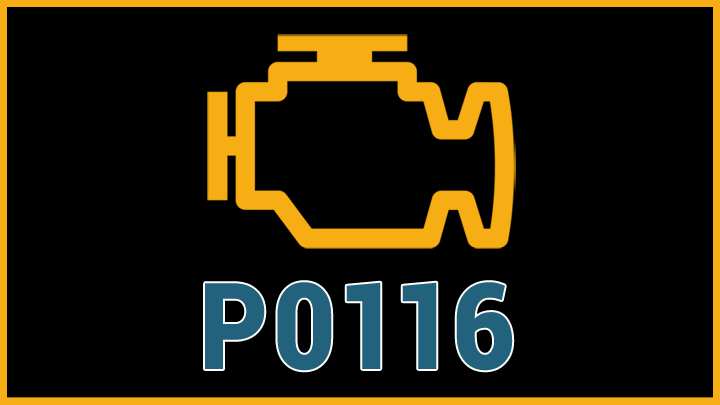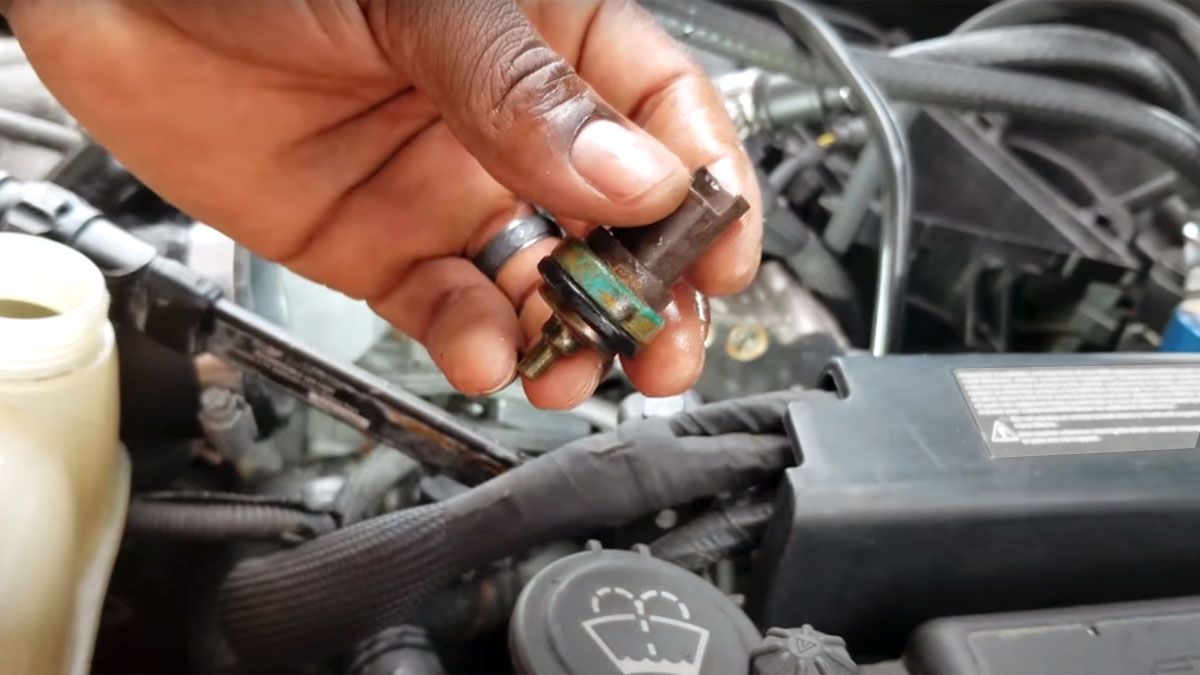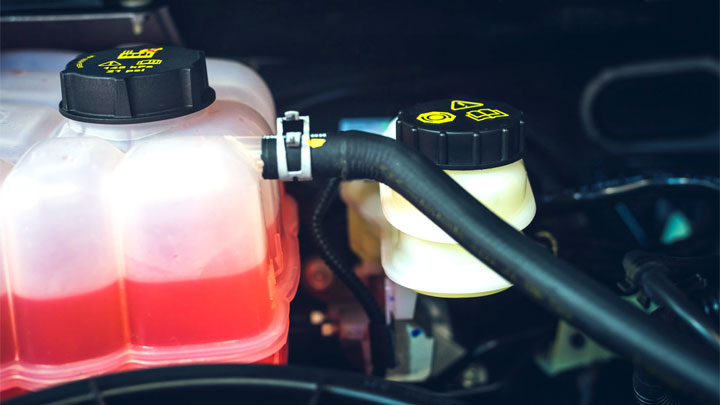P0116 Code (Symptoms, Causes, and How to Fix)
Vehicle fault codes provide drivers a starting point for troubleshooting when issues arise. If you see a P0116 code, your vehicle’s cooling system likely has a problem needing investigation. It may also create various drivability symptoms.
Read on to learn more about diagnostic trouble code P0116 , its likely causes, whether you can continue driving, and how to properly fix it.

What Does Code P0116 Mean?
All modern engines monitor cooling system temperatures electronically, via a specialized temperature probe known as an Engine Coolant Temperature (ECT) sensor. Feedback from this sensor is relayed via a wiring harness to a vehicle’s ECM/PCM for interpretation.
This feedback is used not only to alert drivers to overheating conditions but is monitored in a bid to achieve optimal fuel trims under a wide variation of operating conditions.
A vehicle’s ECM/PCM is programmed to accept feedback from a corresponding ECT sensor, within a specified operating range. Numbers within this range are effortlessly defined, and assigned a designated temperature scale, all in a matter of milliseconds while a vehicle is in operation.
In the case of diagnostic trouble code P0116, a vehicle’s computer has determined feedback from an engine’s engine coolant temp sensor to be irrational or out-of-range. As a result, the ECM/PCM defaults to preset parameters, in order to sustain engine operability.
Nonetheless, these parameters simply serve as a fail-safe and do not accurately reflect true engine temperatures. As a result, engine performance almost certainly suffers.
Related Codes: P0117, P0118, P0125
Symptoms of Code P0116
The presence of diagnostic fault code P0116 is often associated with a host of secondary symptoms, some of which tend to be more troubling than others. Nonetheless, these symptoms can also serve as clues during the earliest stages of the diagnostic process.
The following are several of the most common signs associated with DTC P0116.
- Illuminated check engine light
- Hard start at ambient temperatures
- Black or otherwise dark exhaust smoke
- Reduced fuel economy
- Poor or erratic temperatures at lower temperatures.
- All symptoms seem to resolve themselves at full operating temperature.
Causes of Code P0116

Diagnostic fault code P0116 can be generated due to a handful of potential issues, some of which can be rather difficult to pinpoint. By understanding the potential causes of fault P0116, one finds themselves better equipped to remedy such issues in expedited fashion.
The following are a number of common failures attributed to DTC P0116.
- Defective engine coolant temperature sensor
- Compromised ECT wiring
- Low engine coolant
- PCM failure
Is Code P0116 Serious?
Generally speaking, not all fault producing conditions are showstoppers, in terms of affecting a vehicle’s driveability. Therefore, it is important to understand the severity of any DTC that is stored, P0116 being no exception.
For reference, diagnostic fault code P0116 is typically categorized as being of moderate severity.
Diagnostic fault code P0116 is associated with several different driveability related symptoms, many of which can negatively impact a vehicle’s performance. In fact, this condition is known to compromise a vehicle’s starting ability at certain operating temperatures, but not at others, thereby creating a certain degree of unpredictability.
When a P0116 code appears, it’s important to properly diagnose and repair the underlying issue at the first available opportunity.
If you don’t feel comfortable fixing the problem yourself, take your car to a trusted mechanic where they can correctly diagnosis and repair the issue and restore full functionality.
How to Fix Code P0116

The following steps can be used to assist in diagnosing and repairing the underlying cause of a vehicle’s P0116 fault code. As always, you should consult a factory-specific service manual for your particular model of vehicle before attempting any such repairs.
#1 – Check For Additional DTCs
Before beginning the diagnostic process, one should check for the presence of additional diagnostic fault codes, with the use of a OBD2 code reader or scan tool.
#2 – Verify Coolant Level
With the affected vehicle resting at ambient temperature, the engine’s coolant level should be verified. If low, the engine’s coolant should be topped off, and the corresponding DTC cleared.
#3 – Inspect Freeze Frame Data
With the use of a quality OBD2 scan tool, inspect all pertinent freeze frame data for the stored fault. Determine whether sensor feedback erred toward extreme high or extreme low values during failure.
#4 – Check Feedback During “Unplugged” Test
While monitoring ECT values in a live fashion, unplug the ECT sensor’s wiring. If all wiring in the affected circuit is in satisfactory condition, a noted spike or drop in perceived engine temperature should be noted.
If this is observed as expected, the engine’s ECT sensor should be replaced. If no such reaction is noted, further inspection of the circuit’s wiring will be required.
#5 – Inspect For Wiring-Related Faults
If wiring damage is anticipated, a thorough inspection will be required. This will involve checking for continuity between the ECT pigtail and ECM/PCM, on each wire contained within the circuit.
A lack of continuity on any wire tested would require further physical inspection. If no issues are found, the affected vehicle’s ECM/PCM would become suspect.
- P0480 Code (Symptoms, Causes, and How to Fix) - Apr 19, 2024
- Car Temperature Gauge Stopped Working? (Here’s Why) - Apr 15, 2024
- Ignition Coil vs Coil Pack (What’s the Difference?) - Apr 8, 2024
